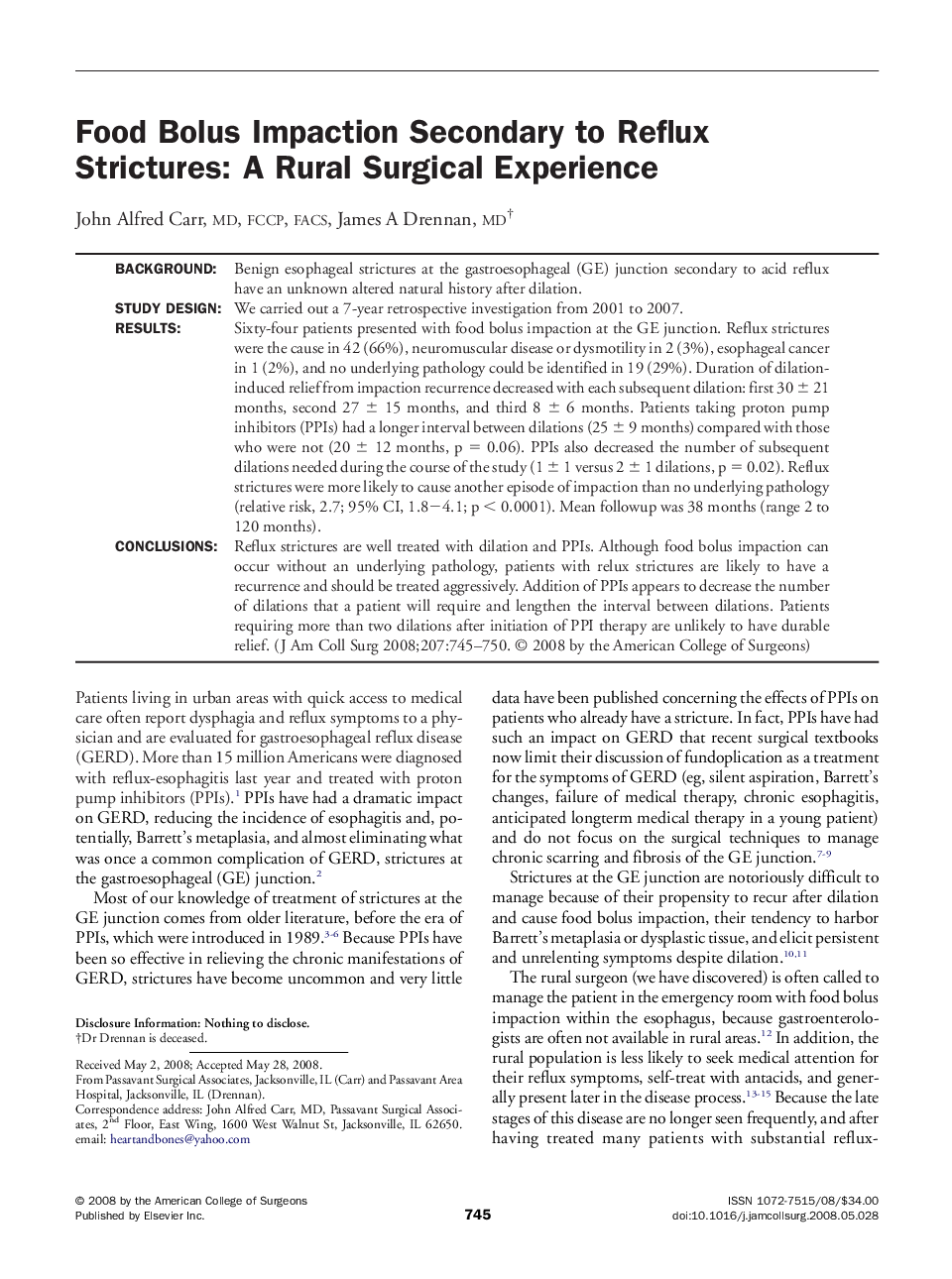| Article ID | Journal | Published Year | Pages | File Type |
|---|---|---|---|---|
| 4294374 | Journal of the American College of Surgeons | 2008 | 6 Pages |
BackgroundBenign esophageal strictures at the gastroesophageal (GE) junction secondary to acid reflux have an unknown altered natural history after dilation.Study DesignWe carried out a 7-year retrospective investigation from 2001 to 2007.ResultsSixty-four patients presented with food bolus impaction at the GE junction. Reflux strictures were the cause in 42 (66%), neuromuscular disease or dysmotility in 2 (3%), esophageal cancer in 1 (2%), and no underlying pathology could be identified in 19 (29%). Duration of dilation-induced relief from impaction recurrence decreased with each subsequent dilation: first 30 ± 21 months, second 27 ± 15 months, and third 8 ± 6 months. Patients taking proton pump inhibitors (PPIs) had a longer interval between dilations (25 ± 9 months) compared with those who were not (20 ± 12 months, p = 0.06). PPIs also decreased the number of subsequent dilations needed during the course of the study (1 ± 1 versus 2 ± 1 dilations, p = 0.02). Reflux strictures were more likely to cause another episode of impaction than no underlying pathology (relative risk, 2.7; 95% CI, 1.8−4.1; p < 0.0001). Mean followup was 38 months (range 2 to 120 months).ConclusionsReflux strictures are well treated with dilation and PPIs. Although food bolus impaction can occur without an underlying pathology, patients with relux strictures are likely to have a recurrence and should be treated aggressively. Addition of PPIs appears to decrease the number of dilations that a patient will require and lengthen the interval between dilations. Patients requiring more than two dilations after initiation of PPI therapy are unlikely to have durable relief.
